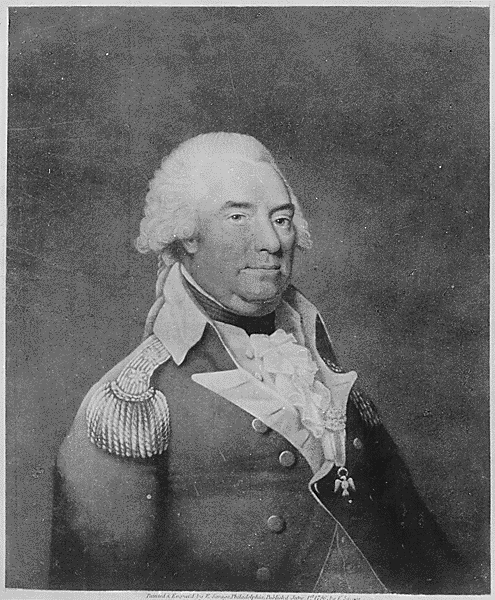Sponsor this page. Your banner or text ad can fill the space above.
Click here
to Sponsor the page and how to reserve your ad.
-
Timeline
1791 Detail
March 4, 1791 - Vermont is added as the 14th State. Carved from portions of New York and New Hampshire, and first known as New Connecticut, Vermont spent fourteen years as an independent republic before joining the Union.

From 1777 forward, they would be that independent Republic of Vermont. After the Treaty of Paris ended the Revolution, sentiments amongst the various parties in New York and Vermont began a slow period of change. By 1790, the legislature of New York agreed to Vermont statehood as long as a boundary could be established and agreed upon; eventually Vermont agreed to pay $30,000 to settle claims of New York land patents. On January 10, 1791, the Vermont legislature agreed to petition the United States for admittance. It passed 105 to 2. Note: some sources state that four objected.
On February 18, 1791, an Act of Congress, the first Congress, third session, admitted Vermont into the United States.
They would be fully part of the United States by March 4, 1791. The census stated that 85,425 people lived in the new state in 1791.

Full Text, Admission of the State of Vermont
An Act for the admission of the State of Vermont into this Union.
The State of Vermont having petitioned the Congress to be admitted a member of the United States,
Be it enacted by the Senate and House of Representatives of the United States of America in (congress assembled, and it is hereby enacted and declared, That on the fourth day of March, one thousand seven hundred and ninety-one, the said State, by the name and style of "the State of Vermont," shall be received and admitted into this Union, as a new and entire member of the United States of America.
Approved, February 18,1791.
(1) An act approved March 2, 1791, declared that "from and after the third day of March next, all the laws of the United States, which are not locally inapplicable, ought to have, and shall have, the same force and effect within the State of Vermont as elsewhere within the United States."
The Republic of Vermont
Settlement in the area had been increasing since the end of the French and Indian War, but conflicting land grants for plots from both the Provinces of New York and New Hampshire had been causing consternation amongst its citizens. On July 30, 1764, King George III, of England, stepped in; he gave the area to New York.
In 1777 with the American Revolution two years old, leaders from twenty-eight towns of what is now Vermont met in Windsor. They were fed up with the rules and claims of the colonies, i.e., states of New York and New Hampshire, as well as the Colony of Quebec. This didn't make the men in the Continental Congress particularly pleased; they refused to recognize their independence, but allowed the representative from Connecticut, William Henry Johnson, to speak on their behalf.
At the meeting on January 15, 1777, a new Republic was born. It was not originally known as the Republic of Vermont, but as the Republic of New Connecticut, and sometimes by area residents as the Republic of the Green Mountain Boys. The constitution was drafted at Windsor Tavern in June, and passed on July 8. They settled on the Republic of Vermont as their name. They also banned the practice of adult slavery, but that law only lasted until 1786. They banned the practice of the state taking land away from its citizens without compensation.
During the period of Vermont independence, they issued their own coins, currency, and ran a postal service. When the Confederation Congress of the United States met in 1781, they passed an act stating that secessionist Vermont could join the Union if they gave up certain claims. That act would be the start of the trek toward becoming a state ten years later.
Photo above: Old Constitution House in Windsor, Vermont, 2006, Adair Mulligan. Courtesy Wikipedia Commons. Image below: Lithograph of Windsor, Vermont in 1886, 1887, Burleigh. Courtesy Library of Congress. Info source: The Federal and State Constitutions Colonial Charters, and Other Organic Laws of the States, Territories, and Colonies Now or Heretofore Forming the United States of America Compiled and Edited Under the Act of Congress of June 30, 1906 by Francis Newton Thorpe
Washington, DC: Government Printing Office, 1909 via the Avalon Project, Documents in Law, History, and Diplomacy, Yale Law School; Vermont Historical Society; Wikipedia Commons.

Back to Index





